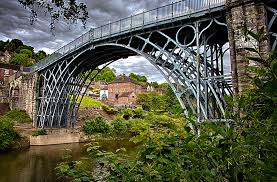When you think of the future of materials science and engineering, you probably don’t think of origami or canning. Neither would most people. I, however, know something that most people don’t, the origin of two amazing materials: metamaterials and aerogels. Due to space constraints, today’s post will just be about metamaterials, but don’t you worry, aerogels are coming right up in the next post.
The art of origami has been around for many centuries, and it has not only ingrained itself in Japanese culture, but it has also spread around the world as a hobby. We’ve all folded a cootie catcher while bored in class, or folded a crane from a piece of scratch paper. Origami is everywhere, because it is literally the art of folding paper. Origami has served a symbolic purpose since its inception, but only recently has it become useful in STEM fields. As maximizing storage space and efficiency become increasingly important, origami has become a welcome solution. This answer comes via metamaterials.
Metamaterials are materials which get their properties from their structure, rather than their elemental composition. Metamaterials are important because they can be used in a variety of different settings, as well as in a variety of different patterns. One particular pattern that has proved particularly useful, especially for maximizing space, is the Miura-Ori. The Miura-Ori is special because it has a negative Poisson’s ratio, which means that it behaves unlike traditional materials. Where a sponge, when compressed on two opposite sides, would expand on the other two sides, a metamaterial would contract on all four sides. Similarly, whereas a sponge, when expanded along the y axis, would contract along the x axis, a metamaterial expanded along the y axis would also expand along the x axis. This property can be useful for a variety of projects, but perhaps one of the most interesting is a NASA mission. On long space journeys, storage space is at a premium, and so a solar panel which could be used later in the journey could only be packed if it could be stored compactly. Metamaterials, and specifically the Miura-Ori pattern, enabled the development of one such solar panel, paving the way for future journeys to the furthest corners of our universe.
NASA’s metamaterial solar panel model at its full size
NASA’s metamaterial solar panel model compressed to save space
Metamaterials have countless other applications as well. Another benefit of the Miura-Ori pattern is that one can introduce reversible defects, which temporarily change properties such as compression strength or the way in which a material condenses. Metamaterials have also been used by researchers at Harvard to create self-assembling robots, which is a great example of the potential that metamaterials have. As these materials continue to be developed, we can be sure that they will continue to impact our lives.
Harvard’s metamaterial being inflated, expanding

Harvard’s metamaterial demonstrating its range of motion

Thank you so much for reading, and I look forward to presenting more intersections of history, MATSE, and anthropology in the future.
P.S. Don’t forget, today’s post will be continued next week in “A Tale of Two Hobbies: Part 2”.






Recent Comments